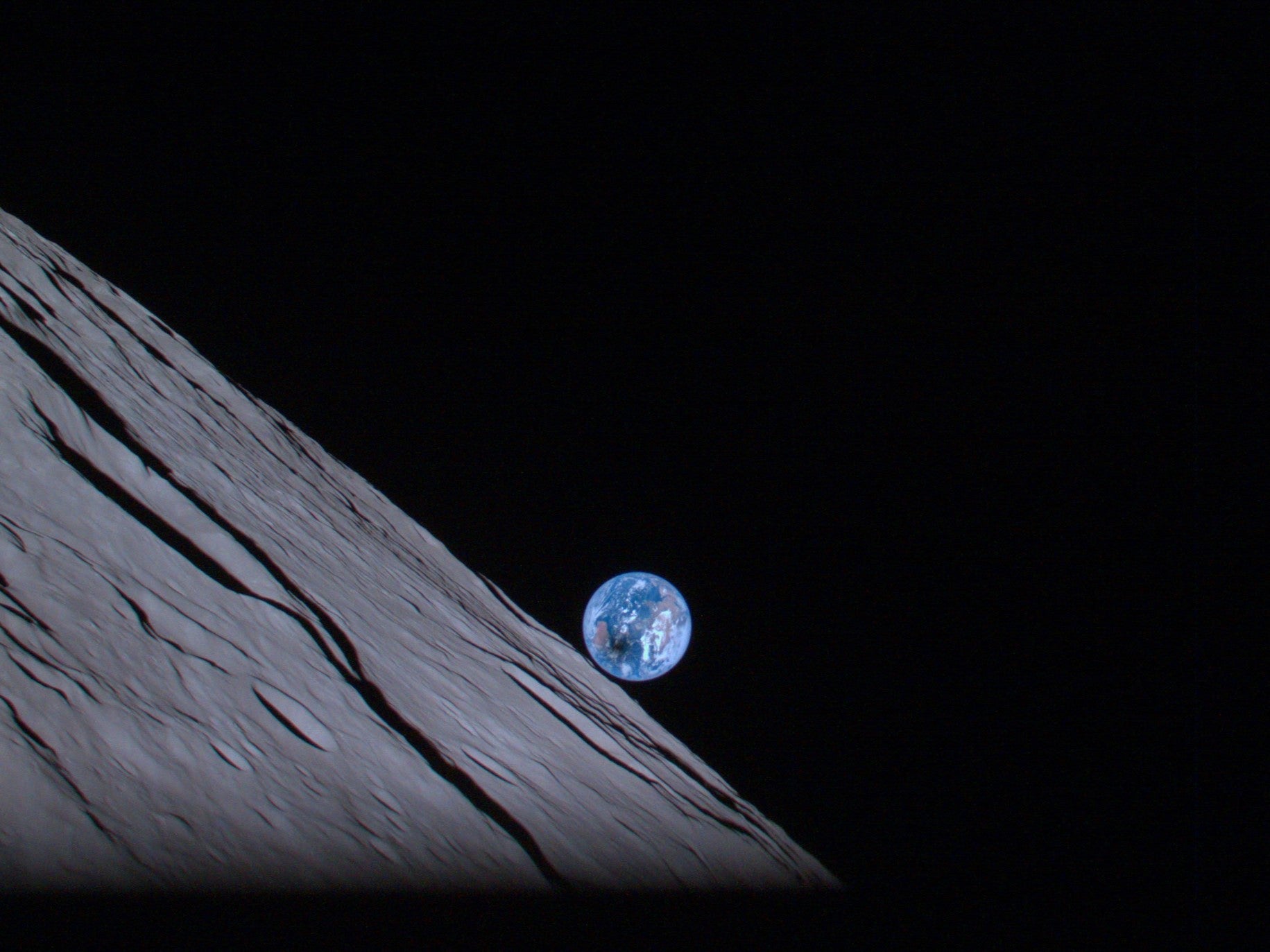Nasa finds ‘wreckage’ of lander that could have been first private spacecraft on the moon
Nasa orbiter finds unusual surface change near lunar spacecraft’s landing site

Your support helps us to tell the story
From reproductive rights to climate change to Big Tech, The Independent is on the ground when the story is developing. Whether it's investigating the financials of Elon Musk's pro-Trump PAC or producing our latest documentary, 'The A Word', which shines a light on the American women fighting for reproductive rights, we know how important it is to parse out the facts from the messaging.
At such a critical moment in US history, we need reporters on the ground. Your donation allows us to keep sending journalists to speak to both sides of the story.
The Independent is trusted by Americans across the entire political spectrum. And unlike many other quality news outlets, we choose not to lock Americans out of our reporting and analysis with paywalls. We believe quality journalism should be available to everyone, paid for by those who can afford it.
Your support makes all the difference.Nasa has spotted the likely wreckage of a Japanese lunar lander that was expected to become the first privately-funded spacecraft to land and operate on the moon.
Images taken by the American space agency’s Lunar Reconnaissance Orbiter (LRO) revealed four large craters on the moon which seem to be the wreckage of Japanese company ispace’s Hakuto-R Mission 1 lander.
The mission was launched on 11 December 2022 on a SpaceX Falcon 9 Block 5 rocket. The spacecraft had lost contact with flight controllers last month as it attempted to land on the moon.
While it successfully entered the moon’s orbit on 21 March, Hakuto-R lost communication with its control centre in Tokyo during the final moments of a landing attempt on 25 April 2023.
The ispace team said the following day that an anomaly had occurred and the lunar lander did not safely touch down on the moon’s surface.
Further analysis suggested that a loss of propellant in the final stage of landing may have led to the spacecraft rapidly descending and landing hard on the lunar surface.
A spokesperson with the Japanese company said in April that there was a high probability that the lander “eventually made a hard landing on the moon’s surface”.
Flying by the area, Nasa’s LRO acquired 10 images around the landing site covering a region roughly 40 by 45km.
Comparing images of this region before the ispace landing attempt, the Nasa team identified an “unusual surface change near the nominal landing site”.
The image comparisons showed at least four prominent pieces of debris and several small changes that are likely different parts of the lander’s body.
“This site will be analysed more over the coming months as LROC has the opportunity to reimage the site under various lighting and viewing geometries,” said a blog post by LRO engineer Emerson Speyerer.
LRO’s new discovery isn’t the first time the orbiter has helped spot wreckage on the moon.
In 2019, the spacecraft spotted the crash site of both Israel’s Beresheet lander as well as that of India’s Vikram lander.
Meanwhile, ispace has said it is already developing Hakuto-R Missions 2 and 3, with the data from the failed landing expected to help the upcoming missions.



Join our commenting forum
Join thought-provoking conversations, follow other Independent readers and see their replies
Comments